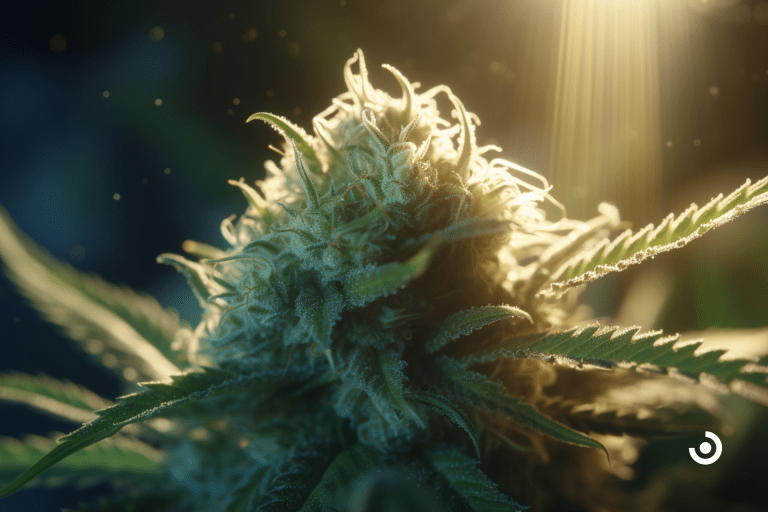Spinal Stenosis
Can medical cannabis help people with this condition? Find out more below.
What is Spinal Stenosis?
Spinal stenosis is a medical condition in which the spaces within the spine become narrow, causing pressure on the spinal cord and the nerves that branch out from it. This can lead to various symptoms, including pain, numbness, tingling, weakness, and even bladder or bowel control loss.
Spinal stenosis can occur in any part of the spine, but it is most commonly found in the lower back and the neck. It is often caused by degenerative changes in the spine that occur with age, such as the development of bone spurs or herniated discs. Other factors contributing to spinal stenosis include arthritis, scoliosis, and spinal tumors.
What causes it?
The most common cause of spinal stenosis is degenerative changes in the spine that occur with age. As we get older, the discs in our spine can start to dry out and shrink, which can cause them to bulge or even herniate. Additionally, the bones in our spine can develop spurs, narrowing the spaces within the spine.
Other factors contributing to spinal stenosis include arthritis, which can cause inflammation and narrowing of the spinal canal, and scoliosis, which can cause the spine to curve and pressure the nerves. Rarely, spinal stenosis can be caused by spinal tumors, infections, or injuries.
How common is it?
Spinal stenosis is a relatively common condition, particularly in older adults. According to the American Academy of Orthopedic Surgeons, approximately 8-11% of the population has spinal stenosis. However, the prevalence of spinal stenosis increases with age, with one study finding that the condition affected nearly 30% of people over 70. Spinal stenosis is more common in men than in women.
Are there types/stages?
There are two main types of spinal stenosis: lumbar and cervical. Lumbar stenosis is the most common type and occurs in the lower back. It can cause pain, weakness, and numbness in the legs and feet. Cervical stenosis occurs in the neck and can cause similar symptoms in the arms and hands. In addition to these types, spinal stenosis can also be classified by the severity of the narrowing, which can range from mild to severe.
Additionally, spinal stenosis has two main stages: early and advanced. Early spinal stenosis may not cause any symptoms or may only cause mild discomfort, while progressive spinal stenosis can cause more severe symptoms and may require surgical intervention.
Signs & Symptoms
Spinal stenosis can cause a variety of signs and symptoms, which can vary depending on the location and severity of the narrowing. Common symptoms of spinal stenosis include pain or discomfort in the back, neck, arms, or legs, as well as numbness, tingling, or weakness in these areas. In severe cases, spinal stenosis can also cause problems with bladder or bowel control. Symptoms may be worse when standing or walking and improve when sitting or lying down. Some people with spinal stenosis may experience gradual symptoms, while others may have sudden onset symptoms.
Diagnosis & Treatment
Diagnosing spinal stenosis typically involves a combination of medical history, physical examination, and imaging studies. During a physical exam, the doctor may check for weakness, numbness, or tingling in the arms or legs. Imaging studies, such as X-rays, MRI, or CT scans, can help to visualize the spinal canal and identify areas of narrowing or compression. Other tests, such as nerve conduction studies, may be used to evaluate nerve function.
Treatment for spinal stenosis depends on the severity of the condition and the underlying cause. Mild cases may be managed with conservative treatments, such as physical therapy, pain medications, and activity modification.
In more severe cases, surgery may be necessary to relieve pressure on the spinal cord or nerves. Surgery may involve:
- Removing bone or tissue.
- Compressing the spinal canal.
- Fusing the affected vertebrae to stabilize the spine.
Can medical cannabis help?
There is some evidence to suggest that medical marijuana may help manage symptoms of spinal stenosis. Some studies have found that medical marijuana can effectively relieve chronic pain, a common symptom of spinal stenosis. One study published in the Journal of Pain in 2015 found that medical marijuana was associated with significant reductions in chronic pain in patients with spinal stenosis. The study included 28 patients who were given either medical marijuana or a placebo for a period of six months. Patients who received medical marijuana reported a significant reduction in pain compared to those who received the placebo.
Another study published in the European Journal of Pain in 2018 found that medical marijuana effectively reduced chronic pain in patients with neuropathic pain, a common symptom of spinal stenosis. The study included 128 patients who were given medical marijuana for a period of three months. Patients who received medical marijuana reported significant reductions in pain and improved quality of life compared to those who received a placebo.
In addition to these studies, there is also some evidence to suggest that medical marijuana may have anti-inflammatory properties, which could help to reduce inflammation and swelling in the affected area. However, more research is needed to fully understand the potential benefits and risks of using medical marijuana for spinal stenosis. However, more research is needed to fully understand the potential benefits and risks of using medical marijuana for spinal stenosis. As with any medication or treatment, it is essential to talk to a doctor before using medical marijuana for spinal stenosis.
Last Updated: June 14, 2024
Get Your Medical Card
Connect with a licensed physician online in minutes
Table of Contents
Keep Reading
-
Exploring Culinary Delights With Medical Cannabis
Enhance your wellness journey with mouthwatering medical cannabis-infused cuisine. Discover gourmet recipes and delectable edibles that will satisfy your taste buds. Explore the world of cooking with medical cannabis today!
-
Does Sativa Make You Sleepy?
Uncover the truth about sativa strains and sleepiness! Find out if sativa can really make you feel drowsy or if it’s just a myth. Click now to discover the surprising answer!
-
The Power Of Cannabis As A Pain Reliever
Unlock the Power of Cannabis as a Natural Pain Reliever – Say Goodbye to Chronic Pain Today! Learn More Now.



